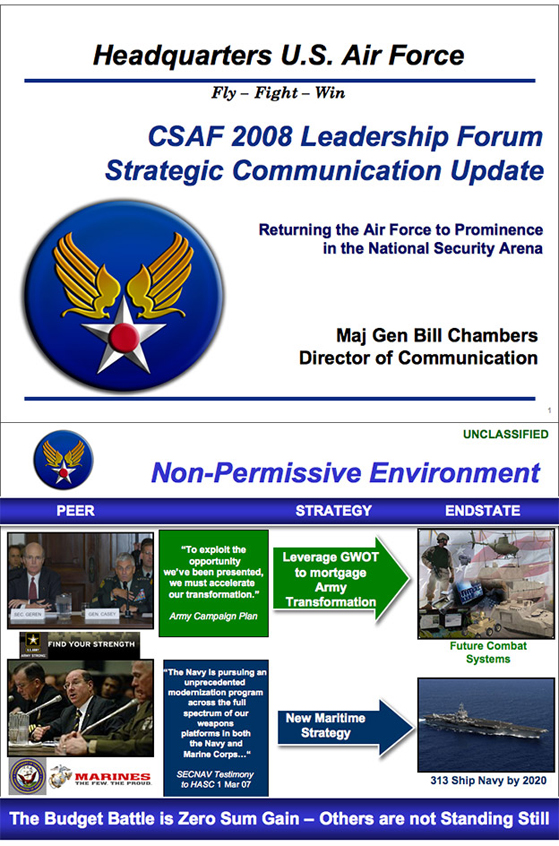Well, maybe supporting families that way helps with the demographic issues that we experience in Europe!
Re that air force business and some daydreaming:
Besides equipment issues (see down below) the Pentagon really should re-do the whole forces structure.
There was a debate (one of them, actually) in the late 1950's about a U.S. General Staff. I think that is overdue. The structure with SecNavy, SecArmy, SecAF, Forces, multi-tier technical, global and regional Commands is way too unruly. And the Joint Commands are basically a GenStaff, but w/o abolishing the old structures. Maybe a structure like General Staff (with couple of directorates) -- Strat ISR Cmd, Strat Weapons Cmd, Strat Logistics Cmd, Spec Ops Cmd -- Theatre Commands -- Ground Forces, Aerospace Forces, Maritime Forces (as forces pools, nothing more). Actual operations (like basically already now, but with way too many other "commands" playing into) managed by the Theatre Commands via permanent or ad-hoc Task Forces, Groups and Units.
Applied to the aerial forces I more and more like the idea of something like a "Tactical Aviation Corps" plus a re-established "Army Aviation Corps". The TacAvCorps as a unified structure, and I think all tactical aircraft should be carrier capables, since I'm not sure that the tactical aviation community will have the ressources in the future to maintain three aerial forces. Close Air Support goes to Army Aviation, Tactical Aviation is tasked only with theatre level ISR, air supremacy and interdiction. I mean, the reason for the Air Force to exist was SAC and LeMay, nothing else. If the strategic nuclear mission go to a strategic command (together with ICBMs, SSB/GNs, BMD) and close air support back to the Army, the reason to maintain the Air Force is not so clear any more. And looking at the NavAir mess and ever less ressources there I'd say a unified tactical aviation would prove more flexible than what there is now.
On to equipment:
I think everything that is spent now on "old" equipment is basically lost money.
The only shooters worth spending money on in the Air Force are F-15E. Those should be kept as up-to-date as possible until some UCAV takes over that role.
In if the USAF is getting short on fighterbombers - the EFA-18EFG is in production. And those are carrier capable, too.
F-15ABCD should be replaced as fast as possible, whereby a evolutionary and navalized F-22B version (F-22 was developed in the 1980s!) could follow the F-22A as standard fighter (these 180 could be sold).
F-35A should be cancelled, only F-35C and B built.
And then a UCAV to fill the gap the A-6, F-111 left and as F-15E replacement.
Plus a Combat Support Platform for ASW, Sensors/Relays, for COD, and as aux tanker, optionally manned/unmanned.
The A-10s should go to the Army.
And any more dicking around with the tanker competition should end and the KC-767 built.
On the strategic aviation side probably the B-52 should be retired. Or the B-1B. But whatever is left should be thoroughly upgraded (incl engines). And I also question the decision to basically retire the heavy manned bomber from the nuclear ALCM carrier role (see AGM-129). Nothing like a bomber gives you such a multitude of attack vectors, vehicles and warheads. The Russians know that.
Strategic air mobility should be supported be at least 350 C-17, an evolutionary B model might be an idea. The C-5 fleet upgrade should be expanded, but kept to the absolute minimum of airframes (40 to 50), the rest retired.
One of the most important aspect would be to maintain a steady (and evolutionary) production, even if it comes somewhat more expensive, after the current elderly equipment is replaced by rather steep production rates. Otherwise the same mess as today shows up again in 15 to 20 years.
As I said - daydreaming.



















Bookmarks